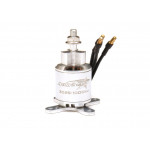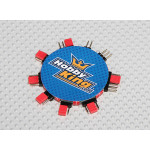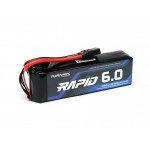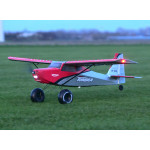Graphene batteries come with two major advantages over standard lithium batteries. They can store larger amounts of energy in the same size package, and they can recharge much quicker thanks to supporting higher electrical conductivity.
So, what are graphene batteries?
Firstly, Graphene batteries remove the safety issue of lithium (LiPo) batteries almost completely, as one of the electrodes in the battery is replaced with a hybrid composite material which must include graphene, making an explosion at the contact of the two electrodes extremely unlikely. Secondly, while safety is very important, it is not the main selling point of Graphene batteries. Whilst lithium batteries are famous for their lightweight-to-capacity ratio, Graphene as a material is extremely lightweight, and due to its thin, flat, and hexagonal structure, it is also an excellent conductor of energy and electricity. Despite being thin, it remains extremely strong (notably stronger than diamond or steel). Graphene batteries have been proven to have a much higher capacity on average than lithium batteries, even in the smaller sizes such as those used in RC models. Lithium batteries can store up to 180Wh per kilogram, whilst Graphene can store up to a massive 1,000Wh per kilogram, meaning longer duration on a single charge with a smaller, lighter battery, and, as a bonus, faster charging.

The typical structure of a Graphene battery.
Turnigy, the name synonymous with performance, reliability, and innovation was at the forefront of this new, powerful battery chemistry. Their first-generation Graphene batteries proved to be unlike anything that had been seen before, they could maintain greater power output, and remain much cooler under load, which resulted in an incredible boost in cycle life.

A first generation Turnigy Graphene battery.
As this new technology progressed Turnigy introduced their next generation of premium graphene packs, the Turnigy Graphene Panther range. These new batteries took the graphene technology to the next level, with even greater performance. The continuous 75C discharge rate offers even lower internal resistance, with a minimal voltage sag. The low internal resistance remains consistent under different temperature circumstances, ranging from 5-52°C (41-126°F).

A second generation Turnigy Graphene Panther 75C battery.
So, power your planes, high-performance EDF jets, helicopters, racing boats, racing drones, and much much more with this premium, latest technology 75C Graphene battery packs.
Get the Graphene Batteries
---
Hear it First: Join our Mailing List
Sign up to receive new product updates, exclusive discounts, news, and more!






